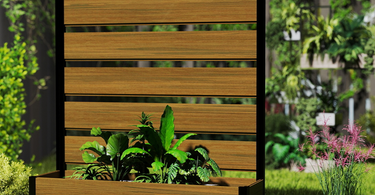Why Raised Garden Beds are a Game Changer for Urban Gardening
The Rise of Small Garden Spaces in the US
Urban gardening is booming in America. More people are growing food in small spaces. Raised garden beds are perfect for this trend. They fit well in tiny yards and on patios. These beds make it easy to grow plants in limited areas.

Raised beds solve many urban gardening problems. They work well on concrete or poor soil. You can put them anywhere that gets sun. This flexibility is key in cities. It lets people grow food even without a traditional yard.
The demand for fresh, local food is driving this trend. People want to know where their food comes from. Growing it yourself is the best way to do that. Raised beds make this possible for many urban dwellers.
Innovative Design and Versatility of Raised Garden Beds
Raised garden beds come in many shapes and sizes. This variety makes them suitable for any space. Some are small enough for balconies. Others can take up a whole backyard. There are even vertical designs for walls.
The materials used are diverse too. Wood is common, but there's also metal, plastic, and stone. Each has its benefits. Wood looks natural but needs more care. Metal lasts longer but can heat up. Plastic is light and easy to move.
Many raised beds are modular. This means you can add or remove sections as needed. It's easy to start small and grow your garden over time. This flexibility is perfect for new gardeners.
Environmental Benefits of Elevated Gardening
Raised beds are eco-friendly in many ways. They use water more efficiently than ground-level gardens. The soil in raised beds drains better. This means less water waste. It also prevents overwatering, which can harm plants.
These beds also reduce soil erosion. The contained design keeps soil in place. This is especially important in areas with heavy rain or steep slopes. It helps preserve topsoil, which is crucial for plant growth.
Raised beds can extend the growing season. The soil in them warms up faster in spring. This lets you plant earlier. In fall, you can cover them easily to protect from frost. This means more food production over the year.
The Impact of Raised Garden Beds on Agricultural Efficiency
Advancements in Crop Cultivation and Soil Management
Raised beds improve crop growth in several ways. The soil in these beds doesn't get compacted. This means roots can spread easily. Better root growth leads to healthier plants and bigger harvests.

Soil management is easier in raised beds. You can tailor the soil mix to each crop. This precise control isn't possible with traditional gardens. It lets gardeners optimize growing conditions for each plant.
Pest control is simpler too. Raised beds create a barrier against some ground pests. It's also easier to spot and remove pests in a contained area. This can reduce the need for pesticides.
Cost-Benefit Analysis: Raised Garden Beds vs. Traditional Planting
While raised beds cost more to set up, they can save money long-term. They use less water and fertilizer than traditional gardens. This cuts ongoing costs. The higher yields also mean more food for your money.
Raised beds require less labor over time. There's less weeding and tilling needed. This saves time and effort. For many, this convenience is worth the initial investment.
The longer growing season of raised beds adds value too. You can grow more crops each year. This increases the overall return on your gardening investment.
Adapting Raised Garden Beds to Climate Change and Water Conservation
Raised beds help gardens adapt to changing climates. They provide better drainage in wet conditions. In dry areas, they retain moisture better than ground-level gardens. This versatility is crucial as weather patterns shift.
Water conservation is a key benefit. Raised beds need less water than traditional gardens. The soil doesn't dry out as quickly. Drip irrigation systems work well with raised beds. These systems deliver water directly to plant roots.
Some raised bed designs include water reservoirs. These store rainwater for later use. This feature is great for areas with water restrictions. It helps gardeners use water more sustainably.
Success Stories and Future Trends
Case Studies: Home Gardening and Community Garden Projects
Many home gardeners have found success with raised beds. One family in Seattle doubled their vegetable yield. They switched from ground-level to raised beds. The better soil and drainage made the difference.

Community gardens are using raised beds too. A project in Chicago created 100 raised beds in vacant lots. Local residents now grow fresh food in these beds. It's improved access to healthy food in the neighborhood.
Schools are adopting raised beds for education. Students learn about plants and nutrition. One school in Texas saw improved science scores after starting a raised bed garden program.
Emerging Technologies in Raised Garden Bed Design
New technologies are making raised beds even better. Smart irrigation systems can water plants automatically. They use sensors to detect when plants need water. This saves time and conserves water.
Vertical raised beds are gaining popularity. These use space more efficiently. They're perfect for small balconies or patios. Some designs include built-in composting systems.
There are now raised beds with built-in pest protection. These have covers that keep out insects and animals. It's a chemical-free way to protect crops.
Predicting the Future of Urban Gardening and Raised Garden Beds
The future of urban gardening looks bright with raised beds. We'll likely see more integration with smart home technology. Imagine beds that adjust soil pH automatically or alert you when to harvest.
Rooftop gardens using raised beds may become more common. They could help cool buildings and reduce energy use. This would be great for urban environments.
Community-based raised bed systems might expand. Neighborhoods could share large raised bed gardens. This would make fresh food more accessible in cities. It could also build stronger communities.
